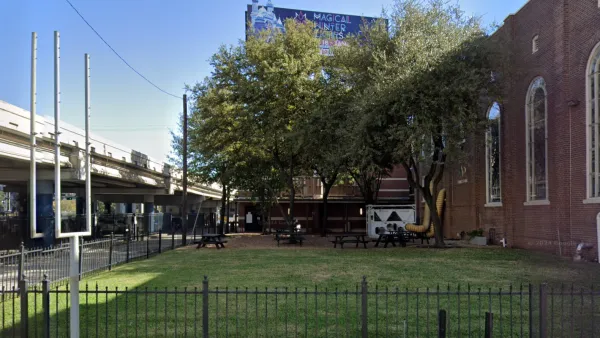This commentary argues that, though it may not be called "zoning", Houston has plenty of land use restrictions and guidelines.
"The Houston Area Survey, conducted for 26 years by Rice University's Dr. Stephen Klineberg, is an unmatched tool for civic discussion about our region. Recent coverage of the newest survey (Chronicle, April 20 "Guiding growth will be a key issue in '09 mayoral tilt") raised the specter of zoning in the city. Responses make it very clear that Houstonians want the city to balance development with quality of life, and they believe planning and regulation is necessary to improve the situation."
"Only 23 percent of residents think 'more land-use planning would be bad for Houston because it will slow economic growth and increase the cost of housing.' On the other hand, 61 percent say 'More land-use planning would be good for Houston because it will improve the region's quality of life and long-term prosperity.' That is, even considering possible negative outcomes, most of us consider planning beneficial."
"But the question that has stirred debate was 'Are you in favor or opposed to zoning in Houston - that is, citywide control over the uses of the land in different areas?' Fifty-four percent favored this idea, 29 percent did not. Almost twice as many favor zoning as oppose it."
"In response to the story on the survey, former Mayor Bob Lanier, a co-founder of the anti-planning, anti-regulation Houstonians for Responsible Growth, sent a letter to the Chronicle worrying about 'calls for prescriptive land-use restrictions on every piece of Houston property.'"
"Guess what? We already have those, and have had them since 1982.
"Land use is heavily controlled in the city's Code of Ordinances. In fact, scholarly papers suggest Houston has an unusually large number of rules governing development."
FULL STORY: Zoning's not the issue in Houston

National Parks Layoffs Will Cause Communities to Lose Billions
Thousands of essential park workers were laid off this week, just before the busy spring break season.

Retro-silient?: America’s First “Eco-burb,” The Woodlands Turns 50
A master-planned community north of Houston offers lessons on green infrastructure and resilient design, but falls short of its founder’s lofty affordability and walkability goals.

Delivering for America Plan Will Downgrade Mail Service in at Least 49.5 Percent of Zip Codes
Republican and Democrat lawmakers criticize the plan for its disproportionate negative impact on rural communities.

Test News Post 1
This is a summary

Test News Headline 46
Test for the image on the front page.

Balancing Bombs and Butterflies: How the National Guard Protects a Rare Species
The National Guard at Fort Indiantown Gap uses GIS technology and land management strategies to balance military training with conservation efforts, ensuring the survival of the rare eastern regal fritillary butterfly.
Urban Design for Planners 1: Software Tools
This six-course series explores essential urban design concepts using open source software and equips planners with the tools they need to participate fully in the urban design process.
Planning for Universal Design
Learn the tools for implementing Universal Design in planning regulations.
EMC Planning Group, Inc.
Planetizen
Planetizen
Mpact (formerly Rail~Volution)
Great Falls Development Authority, Inc.
HUDs Office of Policy Development and Research
NYU Wagner Graduate School of Public Service





























